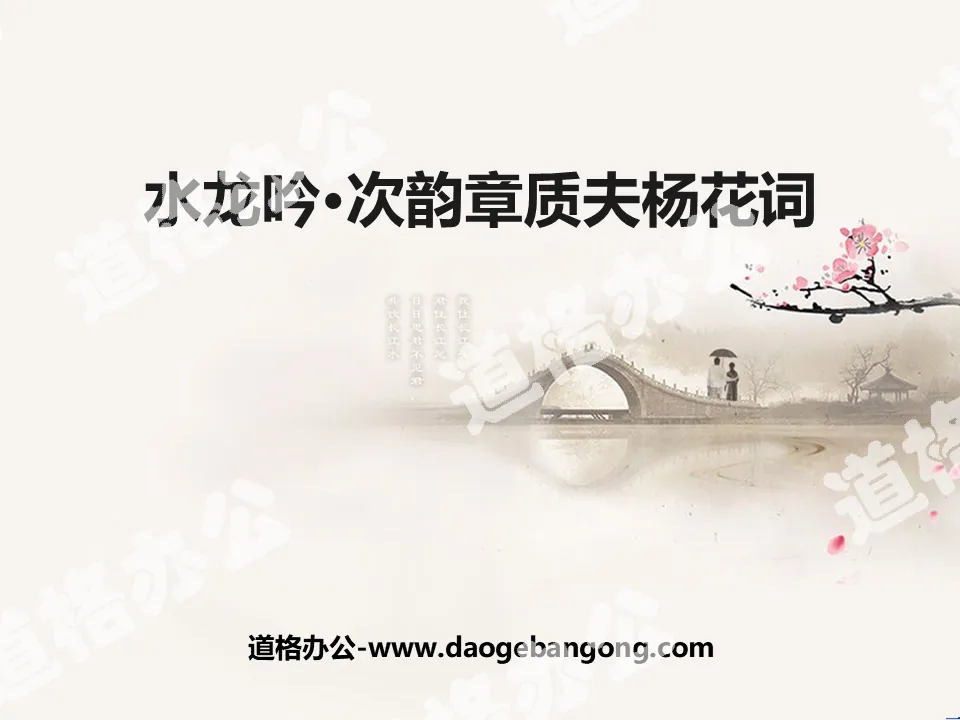The second volume of first-grade Chinese compiled by the People's Education Publishing House
The second volume of fifth-grade Chinese compiled by the People's Education Publishing House
The first volume of Chinese language for eighth grade compiled by the People's Education Publishing House
The first volume of first-grade Chinese compiled by the People's Education Publishing House
The first volume of ninth-grade Chinese compiled by the People's Education Publishing House
The first volume of fourth-grade Chinese compiled by the People's Education Publishing House
The first volume of Chinese language for sixth grade compiled by the People's Education Publishing House
The second volume of Chinese language for eighth grade compiled by the People's Education Publishing House
The first volume of Chinese language for fifth grade compiled by the People's Education Publishing House
The first volume of second-grade Chinese compiled by the People's Education Publishing House
Hunan Education Edition Third Grade Chinese Language Volume 1
The first volume of third-grade Chinese compiled by the People's Education Publishing House
The second volume of fourth-grade Chinese compiled by the People's Education Publishing House
The second volume of second-grade Chinese compiled by the People's Education Publishing House
The second volume of Chinese language for sixth grade compiled by the People's Education Publishing House
The second volume of seventh-grade Chinese compiled by the People's Education Publishing House

| Category | Format | Size |
|---|---|---|
| Beijing Normal University Edition Chinese Language for Eighth Grade Volume 2 | pptx | 6 MB |
Description
"Shuilongyin·Ciyun Zhang Zhifu Yanghuaci" PPT courseware
background
This is a very famous chant. Zhang Zhifu, a native of Pucheng, Fujian, was a colleague and friend of Su Shi. He wrote "Water Dragon Song", which praises Yanghua. Su Shi's song is a work of secondary rhyme. According to the original rhyme of other people's words, writing words that correspond to each other, and even the order is the same, is called "secondary rhyme" or "step rhyme". Su Shi said in a letter to Zhang Zhifu: "The lyrics of "Liu Hua" are so wonderful that the author did not dare to continue writing them. I thought that when Liu Hua was flying, he was out patrolling and thinking about the four sons. I feel sad when I close the door, so I write down its meaning, and then rhyme it and send it to the clouds, also telling people not to show it to others."
It is generally believed that this poem was written in 1087 AD (the second year of Yuan Dynasty by Zhe Zong), when Su Shi and Zhang Tong were in the capital and had frequent exchanges. However, the letter mentioned that Zhang Zhifu was appointed as the inspector "when the willows and flowers were flying", which is related to Zhang Chu's experience of serving Jinghu North Road in the early summer of 1081 AD (historical records indicate that it was April of the fourth year of Shenzong Yuanfeng). consistent with seasonal characteristics. Therefore, it is more appropriate to set it as 1081 AD (the fourth year of Yuanfeng), which was the second year after Su Shi was demoted to Huangzhou due to the "Wutai Poetry Case".
Comment
Teaching: Let it go.
Ruthless but Thoughtful: Yan Yanghua seems ruthless, but she has her own worries. Han Yu's poem "Late Spring" says, "The poplars and elm pods have no talent, but they can only explain the sky full of snow." The meaning is used here. Si: mood, emotion.
Ying: lingering, lingering. Rouchang: Willow branches are slender and soft, so they are metaphorically called Rouchang. Bai Juyi's "Willow Branches": "People say that willow leaves are like sad eyebrows, and even more sad like willow branches."
Sleepy: Extremely sleepy. Charming eyes: The charming eyes of a beauty, a metaphor for willow leaves. In ancient poems and poems, young willow leaves were often called willow eyes.
Three sentences of "Dream Sui": adapted from the poem "Spring Resentment" by Jin Changxu of the Tang Dynasty: "When you fight the yellow orioles, don't teach them to crow on the branches. When you crow, you will startle your concubine's dream, and you will not get to the west of Liaoning."
Luohong: falling flowers. Sufficient: link.
A pond of broken duckweeds: Su Shi's own note: "The poplar flowers falling into the water are duckweeds. It is believed after testing."
Spring color: refers to poplar flowers.
Shuilongyin·Ciyun Zhang Zhifu Yanghuaci
Even if it is not a flower, no one would cherish it. Abandoning home and taking the road, my thoughts are ruthless and thoughtful (sì). The lingering damage to the soft intestines makes the delicate eyes want to open but also close. The dream travels thousands of miles with the wind, looking for the man's whereabouts, and is called by the oriole again.
I don’t hate that these flowers have all flown away, I hate that the red flowers in the West Garden have fallen and it’s difficult to decorate them. When dawn comes and the rain passes, where are the traces? A pool of broken apples. There are three parts of spring scenery, two parts of dust, and one part of running water. If you look closely, you can see that they are not Yanghua, but the tears of Li Ren.
evaluate
Wang Guowei's "Human Words": Dongpo Yanghua's poems have a harmonious rhyme and resemble the original sung; Zhang Zhifu's original sung poems have a harmonious rhyme.
Zhu Bian's "Old News of Quwei": Zhang Zhifu's poems by Yang Hua are filled with meaning and deeds, which are free and gratifying. Dongpo and Zhi, if they are bold and unrestrained, they will not enter the law. Looking at it slowly, the rhyme is harmonious and melodious, and I feel that the poems are made with weaving and embroidery skills.
Wei Qingzhi's "Poet's Jade Chips": Zhang Zhifu chanted a poem about Yanghua, Dongpo harmonized it, Chao Shuyong said: "Dongpo is like Wang Qiang and Xi Shi, who cleans their feet and fights with the women of the world, how can they be compared to Zhihu Ah!" That's true. I think that the so-called "bead curtains are loose beside the bead curtain, hanging down, and being lifted up by the wind" in Zhifu's poem can also be said to be the best part of Yanghua. Although Dongpo's poem is high, it may not be able to reach it. The poet's comments are unfair. in this way.
Tang Guizhang et al.'s "Selected Notes on Tang and Song Ci": This poem is a harmonious composition. Chanting about things and personification, lingering and multi-faceted. The poem depicts the image of a missing woman. The lingering damage to the soft intestines, the sleepy and delicate eyes, following the wind for thousands of miles, looking for the husband's whereabouts, are writing about Yang Hua, and also about the missing woman. It can be said that the spirit is derived from the relics. And Yang Huafei turned into "tears of separation", which more vividly describes her resentment caused by waiting for others and not returning. He can use poplar flowers as a metaphor for people, and in the process of describing poplar flowers, he completes the shaping of the character's image. This is a level higher than Zhang Zhifu's poems about grievances.
Keywords: "Water Dragon Yin·Ci Yun Zhang Zhi Fu Yang Hua Ci" courseware PPT, Beijing Normal University edition Chinese PPT courseware download for the eighth grade volume 2, eighth grade Chinese slide courseware download, "Water Dragon Yin·Ci Yun Zhang Zhi Fu Yang Hua Ci" courseware download 》PPT courseware download, .PPT format
For more information about the PPT courseware "Shui Long Yin Ci Yun Zhang Zhi Fu Yang Hua Ci", please click the "Shui Long Yin Ci Yun Zhang Zhi Fu Yang Hua Ci" ppt tag.
"Shui Long Yin·Ci Yun Zhang Zhi Fu Yang Hua Ci" PPT courseware 2:
"Water Dragon Yin Second Rhyme Zhang Zhifu Yanghua Ci" PPT Courseware 2 [Second Rhyme] is also called Bu Rhyme, a type of harmonious rhyme. That is, the rhyme and rhyme of the original work are used with other people's poems, and the order of the rhyme words is the same. It began with the mutual singing between Yuan Zhen and Bai Juyi in the Tang Dynasty. "Old Tang Book." Yuan Zhen's biography..
File Info
Update Time: 2024-11-24
This template belongs to Chinese courseware Beijing Normal University Edition Chinese Language for Eighth Grade Volume 2 industry PPT template
"Shuilongyin·Ciyun Zhang Zhifu Yanghuaci" PPT courseware Simple campus recruitment activity planning plan summary enterprise and institution recruitment publicity lecture PPT template is a general PPT template for business post competition provided by the manuscript PPT, simple campus recruitment activity planning plan summary enterprise and institution recruitment promotion Lecture PPT template, you can edit and modify the text and pictures in the source file by downloading the source file. If you want more exquisite business PPT templates, you can come to grid resource. Doug resource PPT, massive PPT template slide material download, we only make high-quality PPT templates!
Tips: If you open the template and feel that it is not suitable for all your needs, you can search for related content "Shuilongyin·Ciyun Zhang Zhifu Yanghuaci" PPT courseware is enough.
How to use the Windows system template
Directly decompress the file and use it with office or wps
How to use the Mac system template
Directly decompress the file and use it Office or wps can be used
Related reading
For more detailed PPT-related tutorials and font tutorials, you can view: Click to see
How to create a high-quality technological sense PPT? 4 ways to share the bottom of the box
Notice
Do not download in WeChat, Zhihu, QQ, built-in browsers, please use mobile browsers to download! If you are a mobile phone user, please download it on your computer!
1. The manuscript PPT is only for study and reference, please delete it 24 hours after downloading.
2. If the resource involves your legitimate rights and interests, delete it immediately.
3. Contact information: service@daogebangong.com
"Shuilongyin·Ciyun Zhang Zhifu Yanghuaci" PPT courseware, due to usage restrictions, it is only for personal study and reference use. For commercial use, please go to the relevant official website for authorization.
(Personal non-commercial use refers to the use of this font to complete the display of personal works, including but not limited to the design of personal papers, resumes, etc.)
Preview










